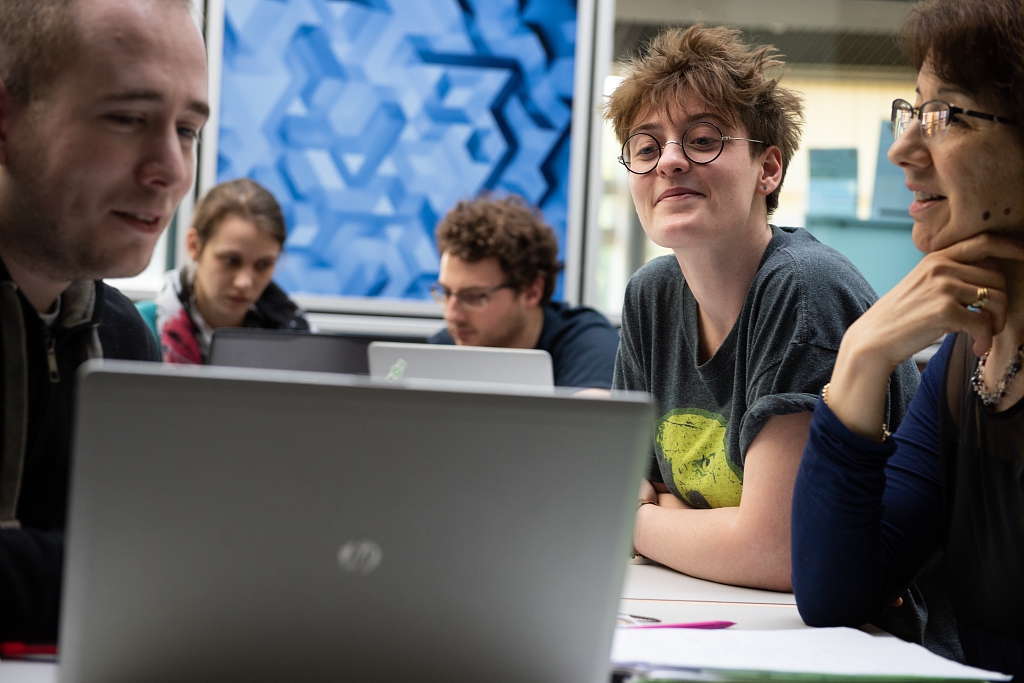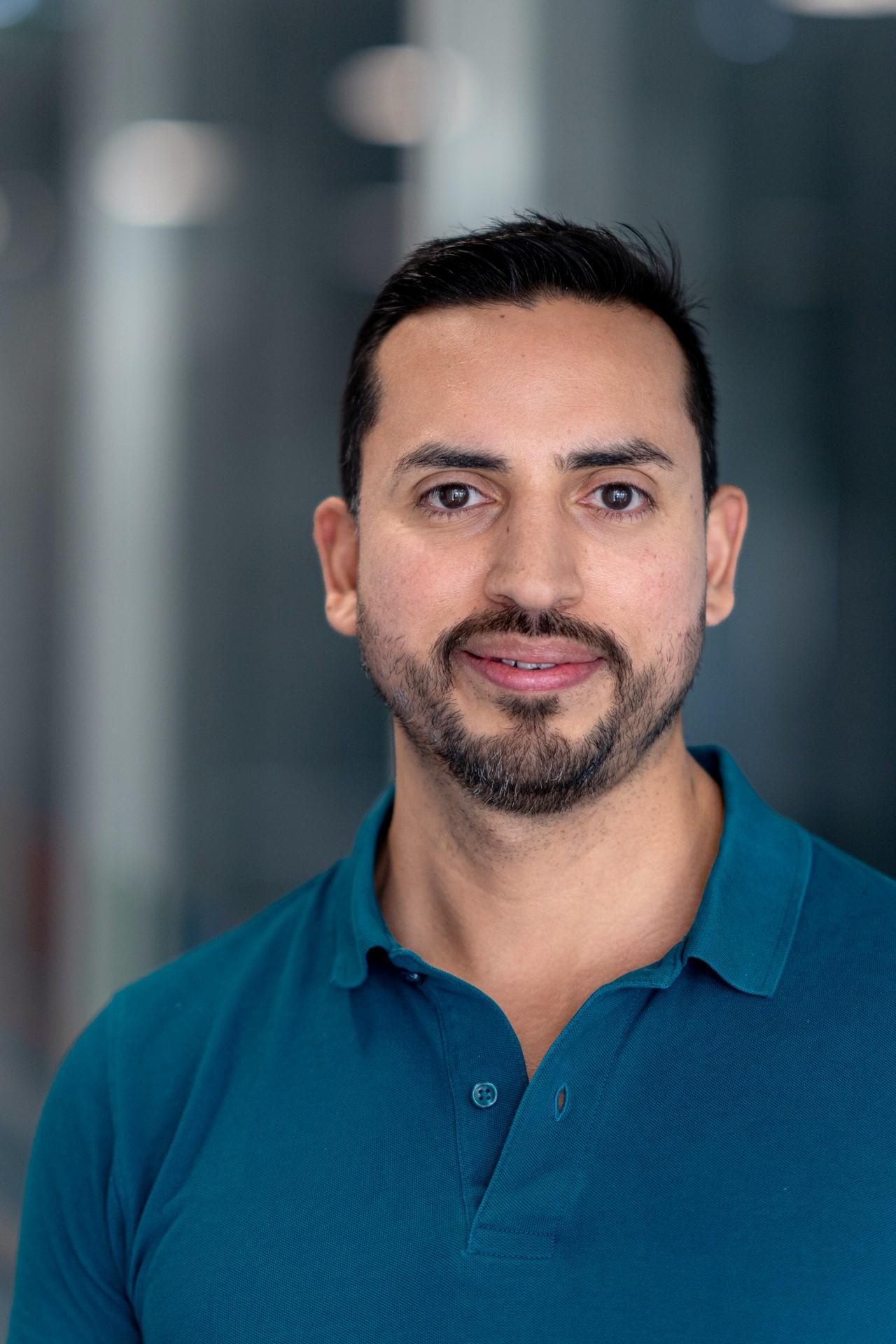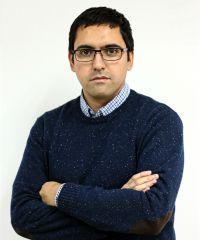Understanding the formation of tsunamis with Panda
Date:
Changed on 09/10/2024

Interview with André de Laire (Paradyse project-team) and Claudio Muñoz (University of Chile), coordinators of Panda, originally published by Inria Chile.
André de Laire : I have known Claudio for many years, and we have always shared a mathematical interest in similar problems, as well as the same kind of mathematical “tools”. However, we have never had the opportunity to collaborate. It was the arrival of Olivier Goubet on the Paradyse team at Inria that triggered the current collaboration.
Claudio Muñoz : André and I have had a strong relationship for many years. In 2019, a joint collaborator (Olivier Goubet) visited us in Chile, and we started a great collaboration on Boussinesq models (usually called “abcd” models) that has led to this joint collaboration. Then I visited them in France in 2023 and had the opportunity to meet the Paradyse team and the Inria center in Lille. This visit was extraordinary, as it was an opportunity where I learned a lot about applied research and also about science management.
André de Laire : Our objective is to study various models of dispersive partial differential equations (PDEs), based on nonlinear analysis and numerical simulation techniques.
Image

Verbatim
The main application of this project concerns the study of wave propagation at the ocean surface. This could help us to better understand complex phenomena such as tsunami propagation.
Auteur
Poste
Coordinator of the PANDA Associate Team, Professor at the University of Lille, member of the Inria team, Inria Center at the Université of Lille.
Claudio Muñoz : Earthquakes are frequent in Chile, and strong earthquakes produce tsunamis that are difficult to model in real time. It turns out that the mathematical understanding of the motion of a tsunami wave on the Chilean coast (e.g., in the Niebla-Corral Bay near Valdivia) has not been studied in detail using applied mathematics.
Image

Verbatim
As a PANDA team, we have proposed a roadmap towards this goal, the one in which a good understanding of the motion of a tsunami wave in a given bay of the Chilean coast can be ensured. In particular, during this 3-year period, we seek to establish the existence and global behavior, from a mathematical and numerical point of view, of solitary waves in variable media, a first step towards a better understanding of these nonlinear tsunami waves.
Auteur
Poste
Professor at Universidad de Chile, CMM researcher, and coordinator of the PANDA Associate Team.
Claudio Muñoz : There are several advantages, some related to research, others to communication and networking with Inria and the French research system. Firstly, we benefit from the competencies and joint work with other teams with capabilities that are not present here. Secondly, we have access to state-of-the-art techniques in pure and applied mathematics and, finally, we establish strong networks with Inria and our Chilean counterparts.
André de Laire : The main advantage is to be able to attack a problem using very different points of view, but in a very complementary way. From the French point of view, the contribution of the Chilean collaborators is very important because of their expertise on the problems we study in PANDA. Moreover, Chilean tsunamis are part of our main motivations!
Claudio Muñoz : Inria Paradyse has a great research capability in numerical and theoretical modeling of nonlinear waves. In Chile, we have been working on theoretical fluid models that build irregular solitary waves. The French PANDA team has rapidly developed a numerical approach to better understand our results on the existence of solitary waves in fluid models with slowly varying surfaces. This is the starting point of a deeper research objective, which is the understanding of real waves riding a variable surface, as is often the case in tsunamis.
André de Laire : I have long wanted to collaborate with my Chilean colleagues. However, the distance makes it quite complicated and expensive. That is why the associate team is an excellent opportunity to facilitate visits and scientific discussions. For example, thanks to the associate team, we are going to hold two workshops in 2024, one in Lille and one in Santiago.
Claudio Muñoz : It is a great opportunity to start a new area of work here in Chile, where we believe many advances can be obtained in the coming years, and with the strong support given by Inria and the Paradyse team. Partnering with a part of the Inria research network will benefit us with more research tools and techniques, and will allow us to improve our research in many directions. Young researchers will also benefit from this joint collaborative effort, and it is expected that new researchers will also be trained in this direction.
An associate team is a joint research project between an Inria project-team and a research team abroad. For 3 years, the partners jointly define a scientific objective, a research plan, and a bilateral exchange program. Since the creation of Inria Chile in 2012, 33 Franco-Chilean research projects from different areas of digital sciences have been funded by Inria within the framework of this program. Currently, nine Associate Teams are working, in which researchers from Inria centers in France collaborate, such as the Inria Centre at the University of Bordeaux, Inria Centre at the University of Lille, Inria Centre at Université de Lorraine, Inria Paris Centre, Inria Centre at Rennes University, Inria Branch at the University of Montpellier, Inria Centre at Université Côte d'Azur; and Chilean institutions, such as the Universidad de Chile, the Pontificia Universidad Católica de Chile, the Universidad de Valparaíso, the Universidad Técnica Federico Santa María, the Universidad Austral, the Universidad de Santiago, the Universidad Adolfo Ibáñez and the Universidad de O’Higgins.